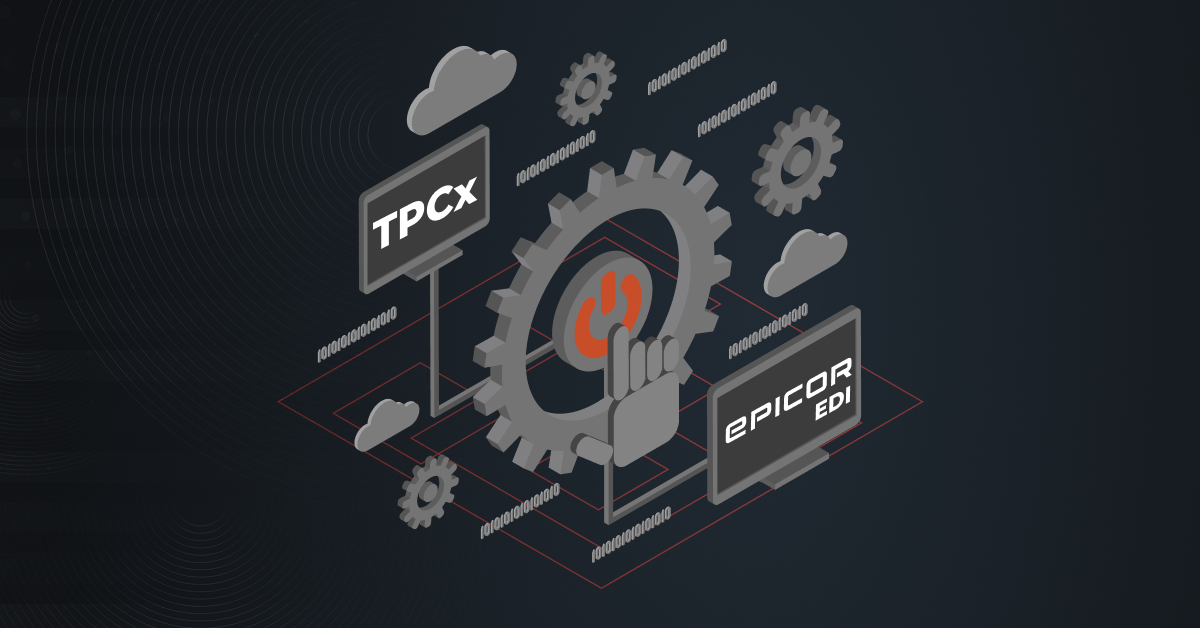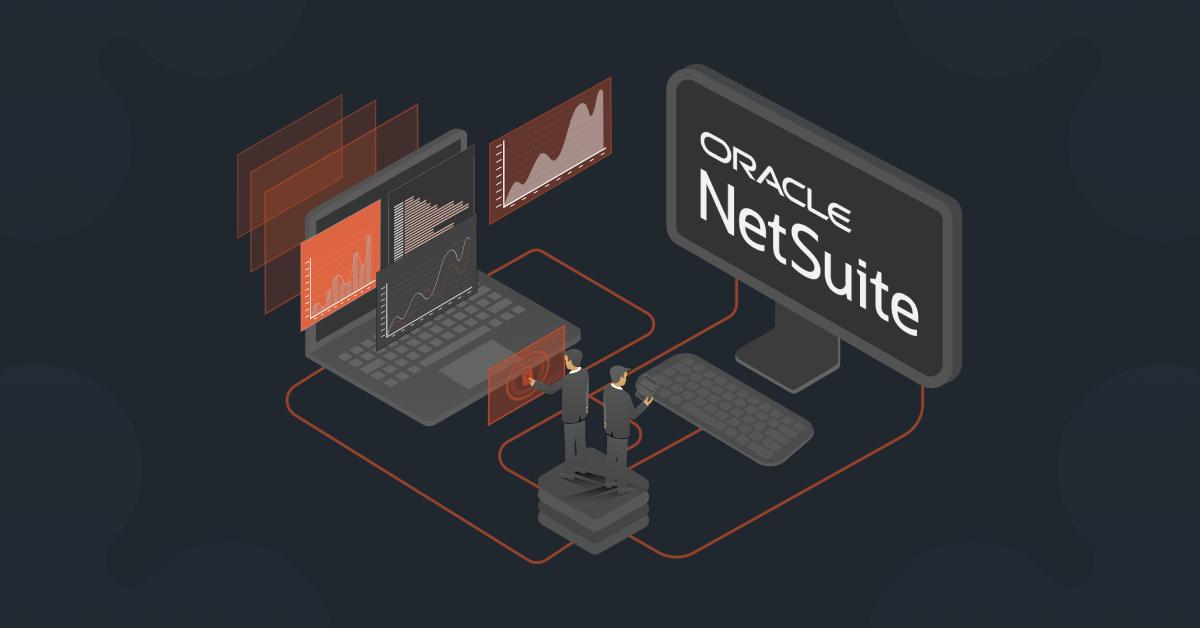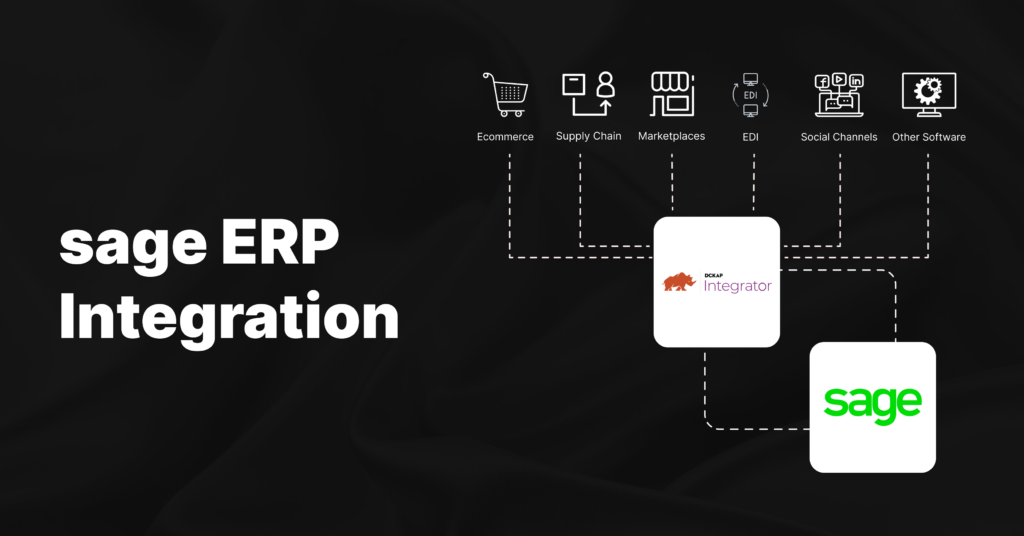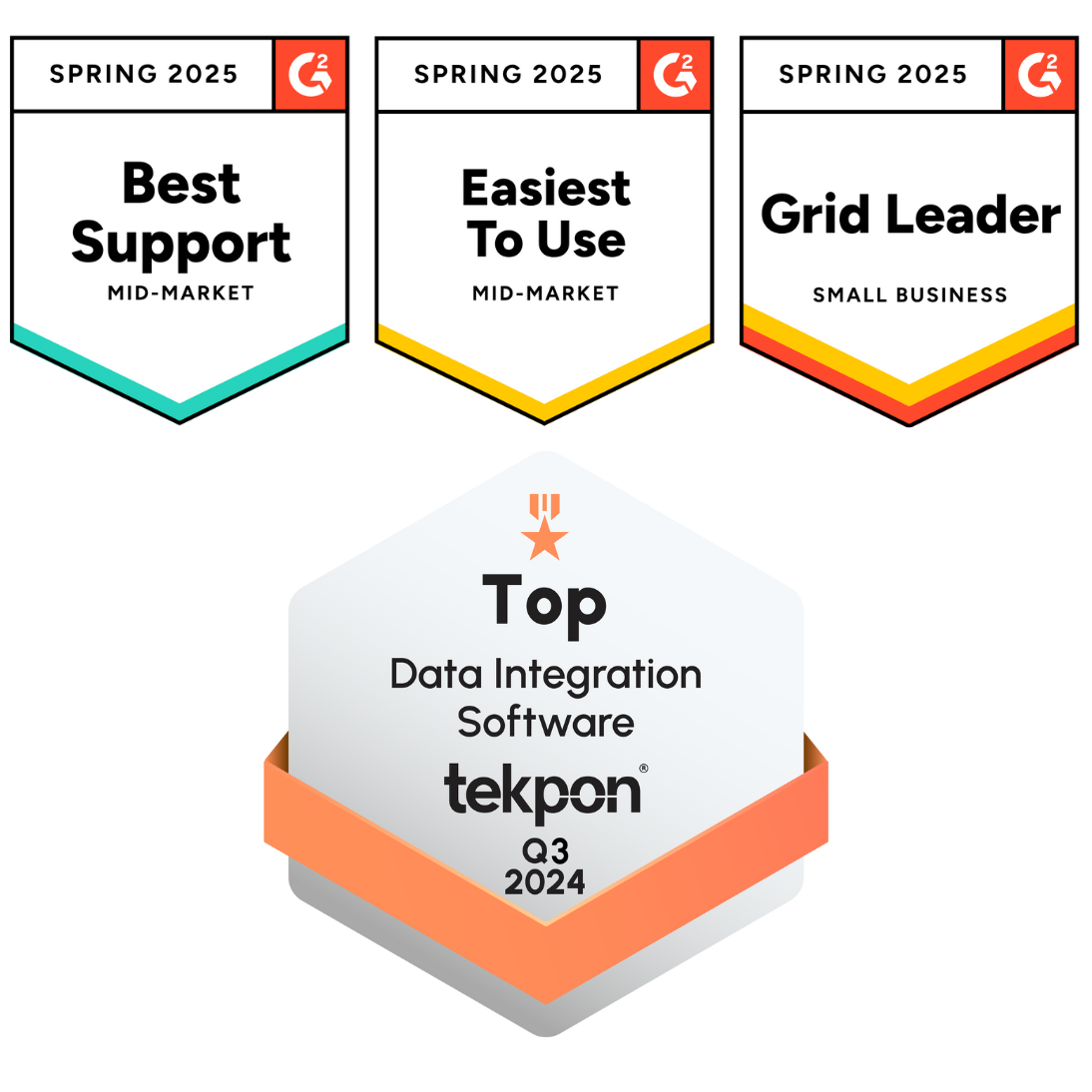ERP integration with WooCommerce is a game-changer for online businesses. WooCommerce is fantastic for selling stuff on the internet, but juggling inventory, orders, and data can be a real problem. This is where ERP (Enterprise Resource Planning) systems step in, acting like the ultimate organizers. They bring all your data sources together, making your eCommerce business run smoother than ever.
Integrating your WooCommerce store with an ERP system can be a time-saver, an error-reducer, and a decision-maker. It’s like having a business sidekick that helps you make smarter choices.
Understanding ERP Integration With WooCommerce?
ERP Integration with WooCommerce refers to the process of connecting an Enterprise Resource Planning (ERP) system with the WooCommerce ecommerce platform. This integration streamlines various business operations by allowing data to flow seamlessly between these two systems.
When done well, its benefits include improved data accuracy, time savings, enhanced customer service, better decision-making, and the ability to handle increased business complexity.
How To Approach ERP Integration With WooCommerce
If you’re looking to integrate your WooCommerce store with an ERP system, the core method is through REST APIs. WooCommerce offers a robust set of APIs that allow different systems to talk to each other syncing customers, orders, refunds, products, shipping details, taxes, and even payment gateways.
Let’s break it down:
Using WooCommerce REST APIs
WooCommerce’s REST API is a powerful tool that helps you connect your store with external business systems like ERPs, CRMs, shipping solutions, and more. It supports key operations like:
- GET: Retrieve data (e.g. customer or order details)
- POST/PUT: Create or update records
- DELETE: Remove entries
The API returns data in JSON, which is readable and easy to work with for most developers. If your ERP system (or the middleware you use) supports HTTP requests and can handle JSON responses, you can build an integration that syncs both platforms in real-time or on schedule.
Typical use case:
Say an order is placed in WooCommerce. The REST API can be used to instantly push that order into your ERP system, along with customer data, payment details, shipping info, and more, no manual data entry needed.
To make it work:
- Enable the API in WooCommerce > Settings > Advanced > REST API
- Generate Consumer Key and Secret
- Define access levels (read, write, or both)
- Use an API client or integration platform to start connecting systems
Now, here are the two integration options you can choose from:
In-house Integration
If you have an in-house development team, it’s entirely possible to build this integration from scratch using WooCommerce’s REST API documentation.
You’ll be responsible for:
- Authentication and secure data handling
- API endpoint mapping between WooCommerce and the ERP
- Data transformation (e.g. matching fields like SKU formats or tax logic)
- Ongoing maintenance, updates, and error handling
While this gives you complete control, it also means your internal team bears the entire load: time, money, and complexity. Even small changes in WooCommerce or your ERP could break the integration if it’s not built with scalability in mind.
Outsourcing Integration to a Provider
If you prefer a faster, more reliable route, you can outsource this process to an integration platform like DCKAP Integrator.
Why this matters:
ERP integration isn’t just about moving data, it’s about syncing business logic, handling exceptions, managing volume spikes, and ensuring data accuracy across systems. That’s where a specialised integration provider shines.
DCKAP Integrator, for example, is built specifically for distributors and manufacturers. It handles the heavy lifting:
- Out-of-the-box connectors for popular ERPs
- Custom data mappings
- Sync schedules, error alerts, retry mechanisms
- Scalability as your business grows
- Onboarding, support, and long-term maintenance
If your ERP system is complex or if you have custom needs (e.g. syncing bundled products, complex tax rules, or handling multi-warehouse inventory), a platform like this ensures smoother execution with less internal effort.
Remember, the method of integration matters just as much as the tools used. REST APIs give you the power but how you use them determines the outcome.
Related reads: What Is ERP eCommerce Integration? [+Best Practices]
Why Integrate your ERP and WooCommerce?
With the eCommerce industry booming, many businesses are turning to WooCommerce as their go-to platform. As your business expands, your operations get more intricate. This is when WooCommerce ERP integration steps in.
ERP Integrations with WooCommerce offers a range of advantages for your business. Here are some of the key benefits:
1. Streamlined Operations: Integrating WooCommerce with an ERP system automates and streamlines key business processes like order management, supply chain management, inventory tracking, and financial reporting. This reduces manual work, minimizes silos, and boosts operational efficiency.
2. Real-Time Data: ERP integrations provide real-time data synchronization. This means you always have up-to-date information on inventory levels, sales, and user data, allowing for quicker decision-making.
3. Improved Customer Experience: With accurate, real-time data, you can better manage customer orders and provide faster, more reliable service. This leads to enhanced customer service and loyalty.
4. Scalability: As your business grows, ERP integrations can grow with you. They are adaptable to changes in product lines, sales volumes, and business expansion.
5. Data Accuracy: By reducing manual data entry and the risk of human error, integrations improve data accuracy. This leads to more reliable financial reporting and analytics.
6. Cost Savings: Automating manual tasks and reducing effort ultimately leads to cost and time savings. You can allocate resources more efficiently and reduce the need for labor-intensive processes.
7. Competitive Edge: A well-integrated system gives your business a competitive advantage. It allows you to respond quickly to market changes and customer demands, staying ahead of the competition.
8. Efficient Decision-Making: Access to real-time data and in-depth reporting empowers your business to make informed, data-driven decisions, which can be crucial in today’s fast-paced business environment.
Related reads: The Definitive Guide on ERP Integration with Salesforce
Key Challenges in WooCommerce ERP Integration
Inconsistent Product Data
If your product titles, SKUs, or attributes aren’t standardized in WooCommerce, syncing them with your ERP becomes error-prone. The ERP might reject duplicate SKUs, or worse assign them to the wrong item.
Complex Variant Structures
WooCommerce handles product variations beautifully for the frontend. But many ERPs require a different structure like treating variants as individual items. This mismatch can lead to inventory errors or missing products in ERP reports.
WooCommerce Plugin Conflicts
WooCommerce stores typically rely on dozens of plugins. But many of these like custom checkout fields or subscription tools can interfere with data formats or override core functionalities, breaking sync processes silently.
Order Sync Delays
Without real-time sync or queuing logic, high-volume stores often see lag between WooCommerce orders and ERP updates. This delay causes over-selling, especially if inventory isn’t adjusted quickly enough.
Partial or Incomplete Syncs
Orders with missing customer data or special formatting can fail silently, especially if the connector doesn’t validate all fields. This results in unaccounted sales or incomplete records in the ERP.
Custom Checkout Fields
Many WooCommerce stores use plugins to collect additional order details like gift notes, delivery dates, or preferences. These fields don’t map automatically into most ERPs, so critical order data can be lost.
Tax and Currency Mismatches
WooCommerce allows flexible tax setups and multi-currency plugins. But if the ERP isn’t configured the same way, financial data will be off, creating reconciliation headaches for accounting teams.
Lack of Error Handling & Logs
Some connectors fail silently, with no logs or alerts when something goes wrong. You may not notice failed syncs until a customer complaint or an inventory audit exposes inconsistencies.
ERP Limitations
Not all ERPs are ready for modern APIs. Some systems offer limited webhook support or batch-only processing. This restricts real-time sync and forces workarounds that aren’t scalable.
Best Practices to Avoid These Issues
To sidestep the issues above, you need a proactive integration strategy, one that understands both WooCommerce’s flexibility and your ERP’s structure. Here are proven best practices that help ensure smooth integration.
- Standardize Product Data First: Clean up SKUs, product names, categories, and attributes across WooCommerce. Make sure your data structure matches your ERP’s expectations; this one step solves half the integration headaches.
- Use a Specialized Connector or Middleware: Avoid one-size-fits-all tools. Use purpose-built integration platforms that understand WooCommerce’s quirks and can handle logic, rules, retries, and conflict resolution.
- Audit Your Plugins Beforehand: Identify any plugin that modifies product, order, or customer data. Disable unnecessary ones or find alternatives that play nice with your ERP connector. Integration testing is not the time to discover a surprise conflict.
- Map Product Variants Explicitly: Make sure you map variant products correctly. In WooCommerce, variants live under a parent product; in ERPs, they may be separate SKUs. If you skip this, stock updates will be inaccurate.
- Enable Real-Time Sync with Queuing: Choose connectors that support real-time updates but also queue transactions when systems are overloaded. This avoids bottlenecks and ensures no order or stock change is lost.
- Configure Custom Field Mapping: If you use custom fields at checkout, plan how they’ll be handled in the ERP. Configure mappings to store those fields properly, so nothing gets dropped or mishandled.
- Align Tax and Currency Settings: Match WooCommerce tax settings with your ERP tax codes and currency rules. Misalignment here can affect invoices, ledger entries, and compliance.
- Test with Real Orders: Don’t test with dummy products alone. Include edge cases like discounts, bundled items, partial refunds, or out-of-stock scenarios. You’ll catch more issues before they go live.
- Enable Error Logs and Notifications: Choose tools that offer clear, human-readable logs and automatic alerts for failures. Fixing sync issues gets 10x easier when you know exactly what went wrong.
- Account for ERP Constraints: Learn your ERP’s API limitations including rate limits, accepted formats, sync intervals and adjust WooCommerce’s sync behavior accordingly. Plus, Integration is not a set-it-and-forget-it process. Monitor sync performance regularly, especially after a WooCommerce update or new plugin install.
Connecting Your ERP and eCommerce Store with DCKAP Integrator
If you’re seeking a streamlined solution for integrating your WooCommerce store with your ERP system, DCKAP Integrator is the best choice. It provides the most reliable WooCommerce integration service
Check out the case study below that illustrates the success story of Walker Zanger, a luxury stone and tile company, as they integrate their online store with a popular ERP, Epicor Prophet 21:
Automated Integration
DCKAP Integrator was pivotal in automating the integration between WooCommerce and P21 for Walker Zanger. This automation allowed them to focus on their core business activities while data synchronization was seamlessly managed.
Scalability and Security
The integration of WooCommerce with P21 required robust security and scalability. DCKAP Integrator ensured that the data exchange was secure, and it could adapt to the growing needs of Walker Zanger’s business.
Customization
Every business has unique requirements. Walker Zanger needed a solution that could accommodate their specific needs, including customer pricing and product image integration. DCKAP Integrator’s flexibility allowed for tailoring the integration to align with their business rules.
User-Friendly Dashboard
Walker Zanger benefited from a user-friendly dashboard provided by DCKAP Integrator. This dashboard gave them a comprehensive view of API calls, success rates, and more. It enhanced transaction security and reduced errors and inefficiencies.
Flexible Scheduler
Integration timing was critical for Walker Zanger. They needed both real-time and scheduled data communication, especially for inventory and new product catalog updates. DCKAP Integrator met these timing requirements effectively.
Role Management
Data security was paramount for Walker Zanger, and DCKAP Integrator offered a customized role management module. This ensured data security without hindering information flow, a key consideration when managing access across teams and departments.
Reporting and Analytics
The integration allowed for better reporting capabilities, enabling Walker Zanger to gain insights into project performance, connector activities, and transactions. DCKAP Integrator’s reporting and analytics module played a crucial role in this.
Alerts and Notifications
Keeping stakeholders informed was vital for Walker Zanger. DCKAP Integrator facilitated custom notifications based on user roles, ensuring everyone was kept up to date with key project events.
Secure Transactions
Security was a top priority for Walker Zanger, and DCKAP Integrator’s SSL certification and GDPR compliance ensured the privacy and security of customer data during transactions.
Developer-Independent
Walker Zanger, like many businesses, didn’t want to be dependent on developers for every adjustment. DCKAP Integrator’s low-code or no-code platform allowed them to customize and operate the integration without the need for coding expertise.
The Walker Zanger case study shows how the DCKAP Integration platform streamlines the integration of WooCommerce with P21, offering automation, security, and customization. If you seek an efficient, secure, and adaptable solution for your ERP integration, DCKAP Integrator is the answer.
Discover the power of DCKAP Integrator and take your business processes to new heights. Sign up for a demo today and witness the transformation firsthand!
FAQs
1. What is WooCommerce ERP integration?
WooCommerce ERP integration connects your WooCommerce store with your ERP (Enterprise Resource Planning) system, allowing key data like orders, customers, prices, and inventory to flow between them automatically. This seamless connection reduces manual work, eliminates spreadsheet errors, and improves productivity across teams.
2. Which are the top ERPs that integrate with WooCommerce?
You can integrate WooCommerce with popular ERP systems like:
- NetSuite ERP
- Microsoft Dynamics 365 (including Business Central and Finance & Operations)
- SAP Business One
- Odoo
- WP ERP (a WordPress based ERP solution)
- Acumatica
- Sage 100 / 300 / X3
These integrations help manage everything from inventory and sales to finance and staff member workflows.
3. What types of applications can you connect with your WooCommerce besides ERP?
Beyond ERP software, you can also integrate various other business applications:
- CRM (Customer Relationship Management) systems like Salesforce or HubSpot for better engagement with new customers
- PIM (Product Information Management) tools to maintain accurate product data
- Accounting apps like QuickBooks or Xero
- Marketing automation tools for emails and campaigns
- Shipping and logistics apps
Together, these connections ensure your WooCommerce workflows remain smooth and centralized.
4. What are the benefits of integrating WooCommerce with ERP?
Here are some key benefits:
- Enhanced customer satisfaction with on-time delivery and accurate communication
- Automatic syncing of orders, stock, and customer data
- Elimination of manual errors and spreadsheets
- Faster response to new orders and real-time updates for your staff members
- Better tracking of revenue, prices, and status updates





